Builders
The Importance of Algae Control
Algae is interesting. Algae is good in our environment as a rule. It produces most of the world’s oxygen, so it’s definitely something we want in our environment, but we don’t want it in our pools. There is a limit to where we want algae to grow, and in a swimming pool, that’s not where we want it to be.
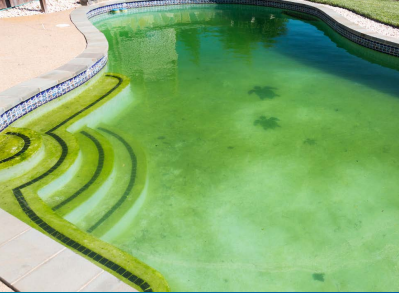
Algae is interesting. Algae is good in our environment as a rule. It produces most of the world’s oxygen, so it’s definitely something we want in our environment, but we don’t want it in our pools. There is a limit to where we want algae to grow, and in a swimming pool, that’s not where we want it to be. Algae Control
A green pool is your customer’s biggest fear. Whether it’s a homeowner or a commercial pool operator, a pool turning green is the most visible problem to have. It’s not appealing to look at or swim in, so it’s definitely something that signals an issue immediately. Preventing algae is important because algae is constantly being added to the pool from a wide variety of sources. If we don’t control the parameters, the pool can be a very hospitable environment for algae to grow and bloom, causing problems.
Sources of Algae Spores
Algae spores come from a wide variety of places: water, the environment, plants and soil, swimmers, birds, ducks, dogs, and anything that brings an outside influence into your pool. For instance, the average bird carries around 85 different types of algae spores on its body. If the wind blows or you have a storm, you’re bringing algae spores into the pool. If we don’t make the pool an inhospitable place for algae, it will grow very effectively, leading to green and murky pools unsuitable for swimming.
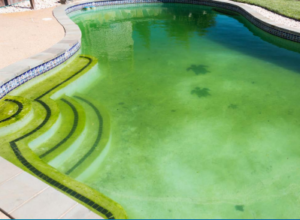
Types of Algae / Green Algae
Green algae is the most common type of algae found in pools. It’s the easiest to get but also the easiest to get rid of. A pool can go from clear to green overnight if you’re not paying attention. Characteristics include the whole pool turning green, algae sticking to surfaces, and cloudy water. Green algae doesn’t stick very tightly to surfaces, spreading throughout the pool.
One of the primary culprits of green algae is Chlorella. Chlorine is effective at
keeping green algae like Chlorella under control. Adding 0.5 parts per million of
chlorine can significantly reduce the number of algae spores. However, relying solely on chlorine is not the most efficient way to maintain a pool. Sometimes, chlorine levels drop to zero, especially in warmer weather, making it easier for algae to grow. Preventative algaecides can provide additional protection, ensuring the pool remains inhospitable to algae even when chlorine levels fluctuate.
While chlorine is an effective algaecide, it’s crucial to use it alongside other
methods to ensure complete control. For instance, copper-based or
polyquat-based algaecides can be particularly effective. Copper works by being
ingested by the algae, disrupting its enzymatic activities and killing it. This makes
copper-based algaecides a reliable choice for preventing and treating green
algae infestations.
Characteristics of Green Algae
Appearance: Green algae can be free-floating or cling to pool surfaces, giving
the water a green tint. It can range from light green to a dark, pea-soup green.
Growth Conditions: It thrives in warm, nutrient-rich water, particularly if the
chlorine levels are low. Sunlight accelerates its growth.
Impact on Pools: Besides discoloring the water, green algae can create a
slippery surface on pool floors and walls, posing a safety hazard. It can clog
filters and strain pool equipment.
- TREATMENT AND PREVENTION
To effectively treat and prevent green algae, follow these steps:
- Shock the Pool: Increase the chlorine levels significantly to kill the algae. Use a
chlorine-based shock treatment, and follow the manufacturer’s instructions for
the correct dosage. - Brush and Vacuum: Thoroughly brush the pool surfaces and dislodge the algae, and then vacuum the pool to remove it.
- Algaecide Application: Chlorine alone can easily kill green algae but if your
having difficulties use a copper-based algaecide or an algaecide that has
both copper and polyquat components, which attack algae from different
angles, ensuring thorough eradication. Make sure you are testing for metals in
the water to ensure you are within acceptable ranges and avoid having metal
issues. - Filter Maintenance: Clean or backwash the pool filter to remove any remaining
algae spores. - Regular Maintenance: Maintain proper water chemistry, including pH, chlorine
levels, and regular brushing and vacuuming, to prevent future outbreaks.
YELLOW (MUSTARD) ALGAE
Yellow algae, or mustard algae, is one of the most frustrating types of algae. It’s
hard to control, hard to get rid of, and often keeps coming back. It clings to the
floor, sometimes the walls, and can resemble sand. Characteristics include fluffing
up into the water when brushed but falling right back down. Yellow algae doesn’t
need much light to grow, often found in shady spots or corners.
The most common type of yellow algae is Eustigmatos. This algae has a hard shell,
making it difficult for chlorine to treat. Chlorine works by poking a hole in the cell
wall, entering the cell, and disrupting its internal functions. However, Eustigmatos has a
hard shell made of beta carotene, which acts as an antioxidant, neutralizing the
chlorine before it can penetrate the cell. This makes chlorine less effective against yellow algae. Copper-based algaecides, on the other hand, do not rely on penetrating the cell wall, making them more effective against yellow algae. Copper disrupts the enzymatic activities within the algae cell, killing it from the inside.
One of the critical steps in treating yellow algae is ensuring that all equipment
used in the pool is cleaned and sanitized. This includes brushes, nets, and poles, as
they can carry algae spores from one pool to another. Additionally, it’s essential to
clean the filter chemically after treating yellow algae to ensure all spores are
removed. Following up with a retreatment five days later can help ensure that any
remaining spores are eradicated, reducing the likelihood of a recurrence.
Characteristics of Mustard Algae
- Appearance: Mustard algae have a yellow or brownish color and usually grow
on pool walls and floors, particularly in areas that receive little sunlight. - Growth Conditions: It can survive in low-chlorine environments and is resistant
to regular chlorine treatments. - Impact on Pools: Mustard algae can cling to pool surfaces and even
equipment, making it difficult to remove without specialized treatment. - Treatment and Prevention
To effectively treat and prevent mustard algae, follow these steps:
- Shock the Pool: Use a heavy dose of chlorine shock specifically designed for
mustard algae. - Brush and Vacuum: Brush all pool surfaces vigorously, paying special attention
to shaded areas where mustard algae tend to thrive. - Algaecide Application: Use a copper-based algaecide or an algaecide that
has both copper and polyquat components, which attack algae from different
angles, ensuring thorough eradication. Make sure you are testing for metals in
the water to ensure you are within acceptable ranges and avoid having metal
issues. - Filter Maintenance: Clean or replace the filter to ensure no algae spores
remain. - Regular Maintenance: Keep the pool water balanced and regularly check and
adjust chlorine levels to prevent future growth of mustard algae.
BLACK ALGAE
Black algae is not really an algae but a cyanobacteria. It likes to grow by sticking to pool surfaces and growing in layers. Characteristics include tolerating a wide range of conditions, preferring plaster pools, and growing in areas with low circulation. Preventing black algae involves keeping water circulating and regularly brushing the pool.
Black algae grows in layers, with each layer protected by a hard shell. This makes it particularly challenging to treat, as you need to break through each layer to expose the active growth underneath. The best way to do this is by brushing the pool surfaces regularly. This helps to dislodge the algae and expose it to the chemicals used in treatment. Running the pump for extended periods and ensuring proper water circulation can also help prevent black algae from establishing itself.
When treating black algae, using a combination of algaecides can be effective.
Copper-based algaecides can penetrate the protective layers, killing the active
growth underneath. Additionally, using a surfactant can help release the algae
from surfaces, allowing the chemicals to work more effectively.
Characteristics of Black Algae
- Appearance: Black algae appear as dark black or blue-green spots on pool
surfaces, often in rough areas such as cracks or plaster. - Growth Conditions: It thrives in pools with poor circulation and low sanitizer
levels. - Impact on Pools: Black algae form strong “Like” roots that anchor into pool
surfaces, making it resistant to brushing and standard chemical treatments.
Treatment and Prevention To effectively treat and prevent black algae, follow these steps:
- Shock the Pool: Use a high dose of chlorine shock specifically formulated for
black algae. Multiple treatments may be necessary due to its resistance. - Brush Aggressively: Use a stiff pool brush to scrub the black algae spots. Be
persistent, as black algae have a protective outer layer that requires rigorous
brushing to penetrate. - Algaecide Application: Apply a potent algaecide that will help break down the
algae’s defenses and kill it effectively. Make sure you are testing for metals in
the water to ensure you are within acceptable ranges and avoid having metal
issues. - Spot Treatment: For particularly stubborn spots, use a direct application of
granular chlorine or a black algae-specific product.
“BE VERY CAREFUL WHEN USING GRANULAR CHLORINE LIKE TRICHLOR. IT CAN AND WILL STAIN THE POOL IF LEFT THERE FOR TOO LONG. - Filter Maintenance: Clean or replace the pool filter frequently during treatment
to remove algae spores. - Regular Maintenance: Maintain a rigorous pool maintenance routine, including
regular brushing, vacuuming, and water testing to prevent the recurrence of
black algae.
Understanding Algae Growth
Algae growth tends to follow a seasonal pattern. Diatoms appear early in the pool
season and later in the fall, preferring cooler water. Green algae is most common
in July and August, thriving in warm water. Black algae tend to grow more towards
the end of the pool season, often starting in areas with low circulation.
Mixed Populations
In research, it has been found that mixed populations of algae are most common.
You may encounter various types of algae in the same pool, so it’s essential to use
an algaecide effective against all types.
Phosphates and Algae Control
Phosphates are a significant nutrient for algae growth. Phosphates are becoming
more and more of an issue partly due to their use is water treatment facilities and
municipalities to help protect pipes. Limiting phosphates in the pool can inhibit
algae’s ability to grow and reproduce. Removing phosphates helps maintain
better water quality and reduces the likelihood of algae problems. There are many
products designed to remove and control phosphate levels in pool water, ensuring
algae has fewer nutrients to thrive on.
Conclusion
There is no magic bullet to pool care but there are many products available to help
make the process easier but its important not to use any algaecide product or
copper based products as a crutch. There is no SUBSTITUTE to quality pool care and water management.
Remember the 7.5% rule. In order to kill algae effectively you must maintain your
free chlorine levels at 7.5% of your CYA levels Example: if your CYA level is 50ppm
you need to maintain a FC level of 3.75ppm
When using Borates the FC ratio to CYA Drops to 5%
Learn about Borates and all its benefits including its ability to help prevent algae on
our Pool Man University App.

-

 Videos4 months ago
Videos4 months agoEpisode-226 – Pool Nation Podcast – Pool Nation Business Groups – The Matrix
-

 Videos5 years ago
Videos5 years agoEpisode -5 Learn Everything About Cal-Hypo with Alan Wing on the Pool Nation Podcast
-

 Videos5 years ago
Videos5 years agoEpisode 3 – Pool Nation Podcast – Chemical Shortage with Jared Schwab
-

 Business11 months ago
Business11 months agoUnderstanding Common Reasons Why Businesses Fail and How to Avoid them
-
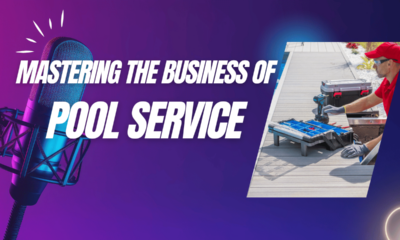
 Pool Pro-Service12 months ago
Pool Pro-Service12 months agoMastering the Business of Pool Service
-

 Business3 months ago
Business3 months agoPSP Expo 2024: Thousands Gather in Dallas for Innovation, Education, and a New Era in the Pool Industry
-
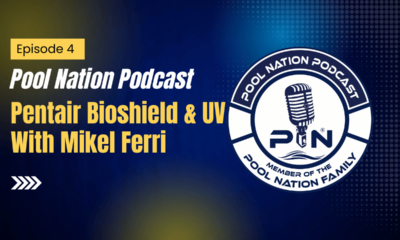
 Videos5 years ago
Videos5 years agoEpisode – 4: Pentair Bioshield & UV with Mikel Ferri Product Manager – Pool Nation Podcast
-
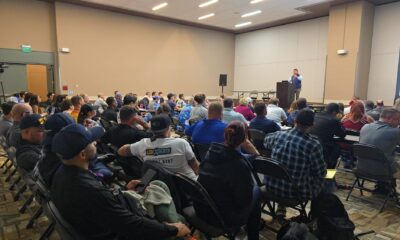
 Business3 months ago
Business3 months agoPool Nation Conference Debuts with Groundbreaking Education and Support for Pros



